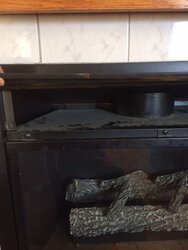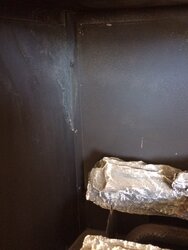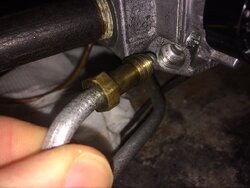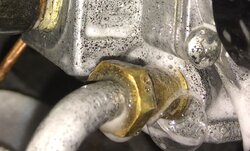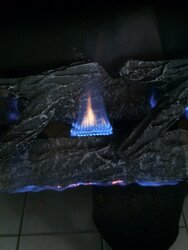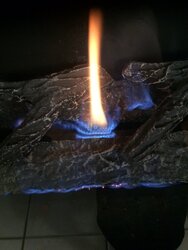Hey everybody, I have an old Superior fireplace(approx 20 years) that I decided to fire up for the first time in a year. I'm getting a faint smell of propane from the top when the blower is on, and only on the left side for some reason. This fireplace is vented outside and I also have a carbon monoxide alarm in the living room. I've left it on for a few hours and its still there, just a very faint smell in the living room. I don't smell it in the bottom compartment where the valve and controls are. I only smell it when its turned on and in the top compartment where the air is blowing out. Is it possible there could be a pinhole somewhere in the actual fireplace? I had the glass door off and I'm positive I put it back on correctly, but like I said, it seems to be coming from the blower air. I'd also like to add that I took out all the logs at one point to clean the thermocouple and thermopile and now the flame seems to scorching the side of the log and leaving a black residue which I never noticed before.. is it possible that could be cause?
I have two pictures attached. One is of the top vent where I'm smelling the propane and the other is from inside the fireplace, where I'm thinking it may be leaking. Thanks in advance!
I have two pictures attached. One is of the top vent where I'm smelling the propane and the other is from inside the fireplace, where I'm thinking it may be leaking. Thanks in advance!


